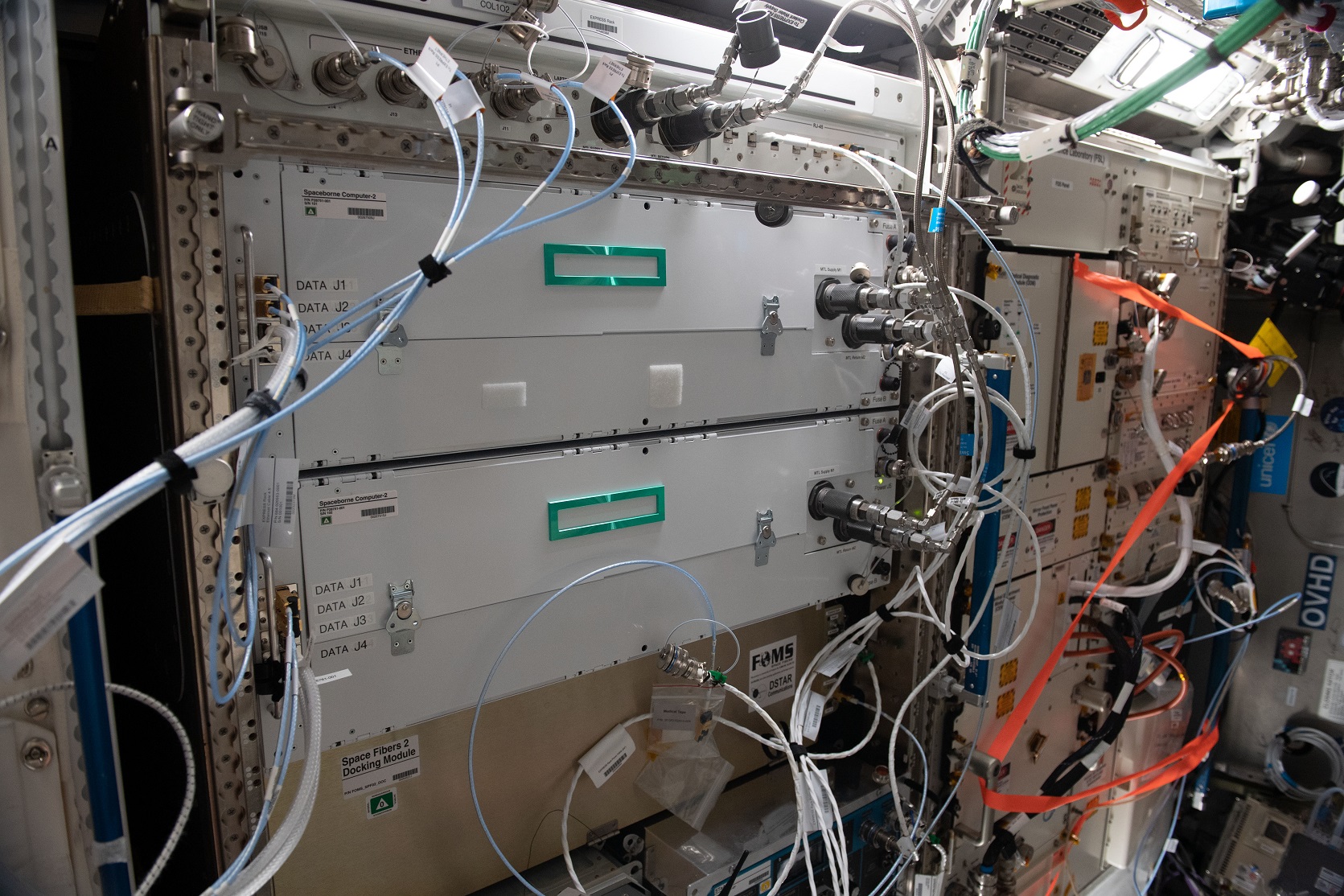It’s been more than a year since HP Enterprise’s Spaceborne Computer-2 (SBC-2) arrived on the International Space Station (ISS) as a part of the Northrop Grumman resupply mission in February 2021. Now HPE has announced in a press release on April 4, 2022 that the SBC-2 has helped complete 24 experiments spanning use cases in healthcare, image processing, natural disaster recovery, 3D printing, 5G, and AI.
What is the HPE Spaceborne Computer?
The company originally designed the system with a two-fold goal: to explore the viability of a commercial edge computing system in space for future missions, and to help researchers complete their experiments faster.

The SBC-2, composed of an HPE Edgeline Converged EL4000 Edge system and a ProLiant DL360 server, officially succeeds the first Spaceborne Computer launched in 2017. HPE explained in a blog post that the original Spaceborne computer was a proof of concept to test whether a commercial PC could survive in space. To do so, the SBC had special software installed and was hardened to not only withstand the rigours of a rocket launch, but also high levels of radiation. The SBC-2 has twice the computing power of the original SBC and new graphics processors for image analysis and to speed up AI workloads.
HPE noted that the SBC-2 can reduce the time-to-insight from months to minutes, greatly speeding up tasks like processing medical imagery, DNA sequencing, and analyzing data from the ISS’ sensors.
Adding more computing resources is great, but why spend all the time and money to send computers to space when the tasks can be sent to computers on earth? While it’s true that the constellations of low-earth orbit satellites have reduced latency between earth and the ISS, astronauts will sometimes need instant results for missions beyond the earth’s orbit, like those to Mars. In Mars orbit, it takes 20 minutes to send a signal to earth, and another 20 minutes to receive a response. A 40-minute round-trip time is untenable for some scenarios.
Even in earth’s orbit, some tasks just can’t wait. HPE said that the ISS carries hundreds of sensors that generate massive volumes of data. With in-space edge computing, researchers can process them right on board without needing to send them to earth.
The SBC-2 can help in the following use cases:
- Real-time monitoring of astronauts’ physiological conditions by processing X-Ray, sonograms and other medical data to speed time to diagnosis in space
- Examining traffic trends by having a wider look at the number of cars on the road and even in parking lots
- Air quality by measuring the level of emissions and other pollutants in the atmosphere
- Analyzing lightning strike patterns that trigger wildfires
- Modelling and forecasting dust storms on earth to improve future predictions on Mars
What’s next?
HPE’s SBC-2 will continue to run experiments on the ISS. In the future, HPE hopes that its space technologies will make their way into products from various space agencies and companies. HPE is also planning on bringing more advanced tech to space in future, including Memory-Driven Computing that can boast even greater compute power.
